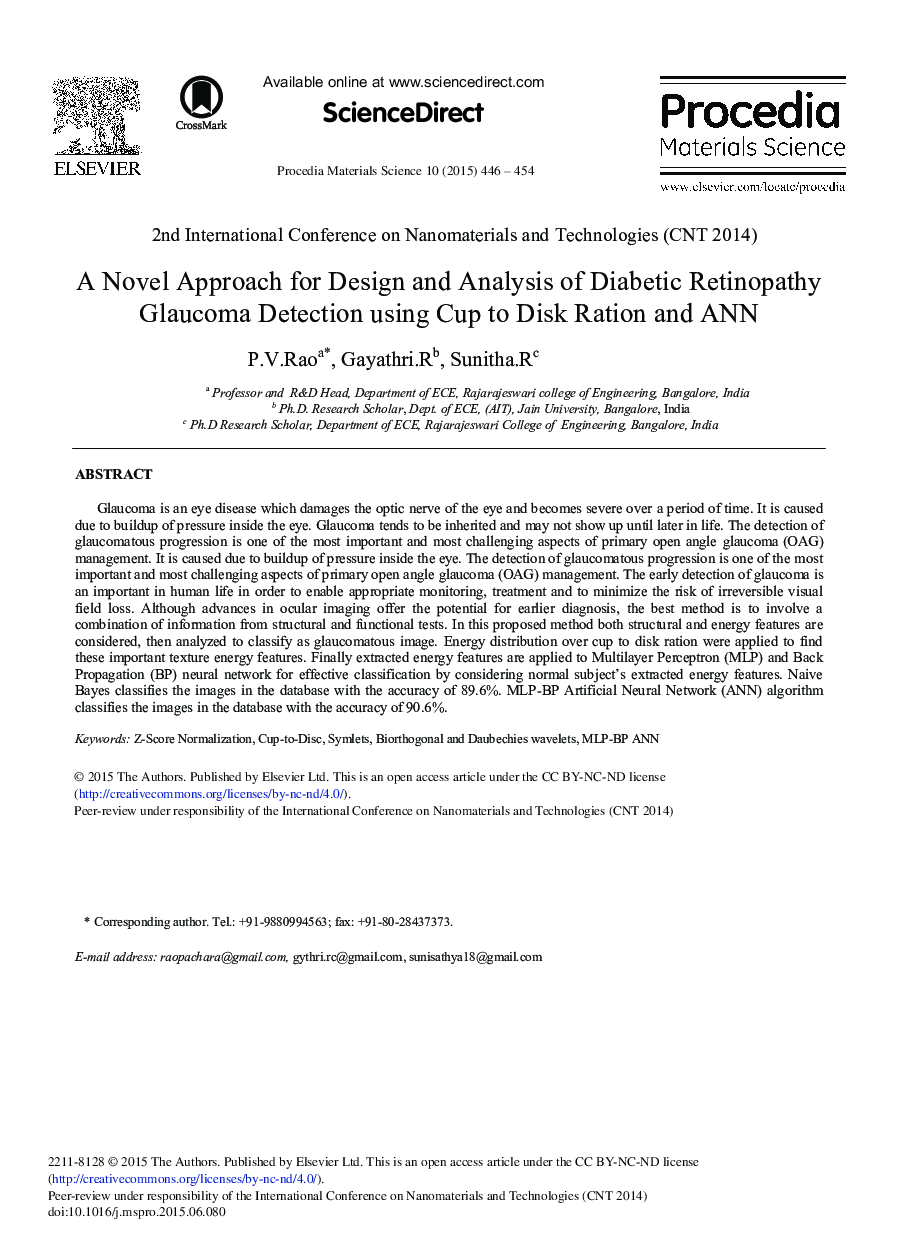| Article ID | Journal | Published Year | Pages | File Type |
|---|---|---|---|---|
| 1634341 | Procedia Materials Science | 2015 | 9 Pages |
Abstract
Glaucoma is an eye disease which damages the optic nerve of the eye and becomes severe over a period of time. It is caused due to buildup of pressure inside the eye. Glaucoma tends to be inherited and may not show up until later in life. The detection of glaucomatous progression is one of the most important and most challenging aspects of primary open angle glaucoma (OAG) management. It is caused due to buildup of pressure inside the eye. The detection of glaucomatous progression is one of the most important and most challenging aspects of primary open angle glaucoma (OAG) management. The early detection of glaucoma is an important in human life in order to enable appropriate monitoring, treatment and to minimize the risk of irreversible visual field loss. Although advances in ocular imaging offer the potential for earlier diagnosis, the best method is to involve a combination of information from structural and functional tests. In this proposed method both structural and energy features are considered, then analyzed to classify as glaucomatous image. Energy distribution over cup to disk ration were applied to find these important texture energy features. Finally extracted energy features are applied to Multilayer Perceptron (MLP) and Back Propagation (BP) neural network for effective classification by considering normal subject's extracted energy features. Naive Bayes classifies the images in the database with the accuracy of 89.6%. MLP-BP Artificial Neural Network (ANN) algorithm classifies the images in the database with the accuracy of 90.6%.
Keywords
Related Topics
Physical Sciences and Engineering
Materials Science
Metals and Alloys
Authors
P.V. Rao, R. Gayathri, R. Sunitha,
